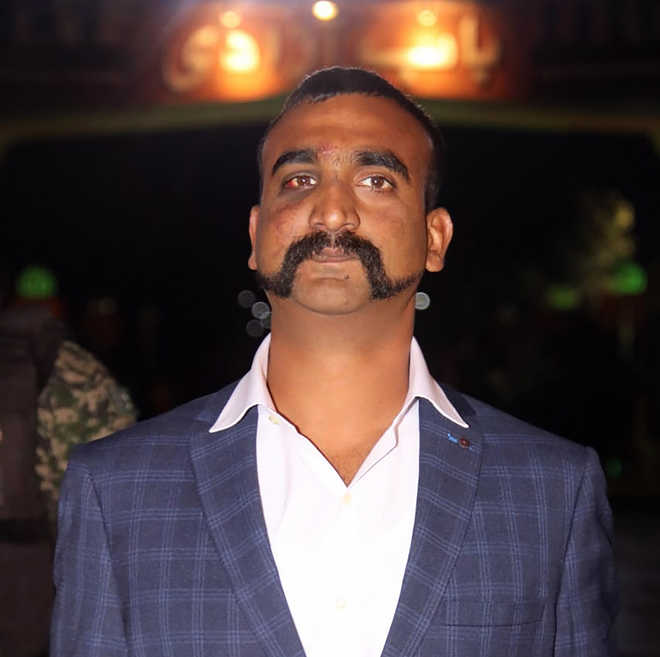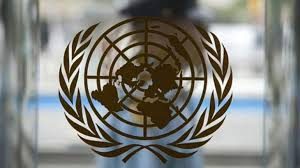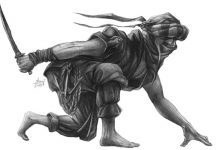Apprehended after Wing Commander Abhinandan’s plane crashed across the line of control, he was beaten by the locals. He was tortured. But he remained calm and stoic. Abhinandan’s homecoming was awaited nationally and internationally. Tapati concludes her three-part article with lessons of warfare from our past, exclusively for Different Truths.
Indian jets erased few terror camps on the soil of Pakistan in the wee hours of 24th night, highlighting the importance of time and place. It reminded quotes from our past wisdom that: “In daytime the crow kills the owl. At night the owl kills the crow.” Thus, the time of fight is important. Similarly, “A dog on land drags a crocodile; and a crocodile in water, drags a dog.”
Following days were turbulent when there was a dog fight in the sky; enemy jets crossed our border to showcase their power and Indian forces retaliated. Big chases were enacted over the sky before both sides lost fighter planes. The war scenario escalated with a MIG pilot from Indian side being captured by Pakistan. Now, every Indian was concerned with safety of Wing Commander Abhinandan. There were ripples in International scenario when global allies speculated on any further escalation leading to war between India and Pakistan. By the time the Indian pilot was released, lots of diplomatic conversation and under current had taken place.
Wing Commander Abhinandan was the centre of attention all day – for days, in fact. Apprehended after his plane crashed across the line of control, Abhinandan was beaten by the locals. One video showed that locals on Pakistan occupied Kashmir are punching and slapping him and hurling abuses even when he was on the ground. Next, he was shown with bloodied face with hands and feet tied in a room with Pakistani officers.

Questions were raised why he (Abhinandan) was being tortured inspite of the fact that he is protected by the Geneva Convention, which ensures that imprisoned persons must be treated humanely…
Questions were raised why he was being tortured inspite of the fact that he is protected by the Geneva Convention, which ensures that imprisoned persons must be treated humanely in all circumstances and protected from murder,  torture or cruel, humiliating or degrading treatments. They should get minimum conditions of detention covering accommodation, food, and medicine.
torture or cruel, humiliating or degrading treatments. They should get minimum conditions of detention covering accommodation, food, and medicine.
Article 51 of the 1977 Additional Protocol I and Article 27 of the Fourth Geneva Convention of 1949 provide safeguards to the protected person in the occupied territory. Treatment to sick and wounded in the war was the founding principle of the Geneva Convention signed in 1864.
The principles of international law on the treatment of prisoners of war, which have evolved gradually since the 18th century, the conduct of war, now have been consolidated in the Geneva Conventions of 1949, three Additional Protocols, and a series of other treaties.
At this moment, my mind had travelled back to the past, the wars and international relations. What happened in a similar situation in the past?
Warfare exists in the world since the recorded history of human beings. It has devastating consequences. Limitations on its conduct were close behind. The conduct of Roman war, as reported in various kinds of literature, was unrestrained. Prisoners could be enslaved or massacred, plunder was general, and no distinction was made between combatants and noncombatants. This changed with time.
Similar to the contemporary laws of armed conflict, Kautilya’s laws of war were founded on the principle of humanity.
Similar to the contemporary laws of armed conflict, Kautilya’s laws of war were founded on the principle of humanity. The text clearly recognised the distinction between military targets, which could be attacked, and nonmilitary persons and objects, which could not be attacked. Warfare was largely confined to combatants. The destruction of cities or towns during a war was prohibited.
“The following shall not be harmed when the enemy fort or camp is attacked: (a) Those who have fallen down in the fight, (b) Those turning their backs on the fight, (c) Those who surrender, (d) Those whose hair are loose as mark of submission, (e) Those who have abandoned their weapons, (f) Those whose appearance is changed through fear and lastly (g) Those who are taking no part in the fight.”
It is a matter of pride that laws of our land since ancient times bear many similarities with the International Humanitarian Law of modern times. Arthashastra advocated the humanitarian treatment of conquered soldiers and citizens. In particular, it was maintained that a humanitarian policy towards defeated people was practical; pointing out that if a king massacres those whom he has defeated, he frightens all the kingdoms that surround him and terrifies even his own ministers, whereas more land and loyal subjects can be gained if the defeated are treated magnanimously. We can relate this to recent developments in our neighbourhood when global diplomatic pressure prevailed on Pakistan and ensured a safe return of Abhinandan to India.
Indian polity advised that the conquering king should order the release of all prisoners and give help to the distressed, the helpless and the sick, similar to a contemporary policy contained in the third Geneva Convention of 1949 relating to the treatment of prisoners of war.
With a deep understanding of criminal justice and war justice it was advocated that a defeated king shall be treated with respect and his ministers be treated humanely.
With a deep understanding of criminal justice and war justice, it was advocated  that a defeated king shall be treated with respect and his ministers be treated humanely. Surprisingly, though a harsh realist, Kautilya advocated mercy towards the people defeated in a war, a contrast to the reality of modern-day conflict where principles and rules of IHL are being violated with impunity.
that a defeated king shall be treated with respect and his ministers be treated humanely. Surprisingly, though a harsh realist, Kautilya advocated mercy towards the people defeated in a war, a contrast to the reality of modern-day conflict where principles and rules of IHL are being violated with impunity.
“One must kill a dangerous person; however, the ruler must leave his property untouched and shall not appropriate the land, property, sons or wives of the killed one.” … Rules were made with few principles like respect to protected persons in all circumstances, their honour, their family rights, their religious convictions and practices, and their manners and customs.
The laws of war in ancient India with regard to occupied territory were, thus, more humane and broader than those of IHL today. The Fourth Geneva Convention of 1949 and the 1977 Additional Protocol I contemplate and contain similar obligations in the occupied territory.
Some of the measures permitted under modern IHL are similar to those mentioned in Arthashastra are inciting of enemy combatants to desert or mutiny or to rebel, spreading of rumour and dissemination of misleading information affecting the morale of the adverse armed forces.
On the night of 1st March, Wing Commander Abhinandan was returned to India ending a day-long wait with suspense and speculation over the delay.
Numerous questions still remain unanswered when states in different parts of the globe differ in their opinion about calls of war and peace, even at the face of terror attacks.
Numerous questions still remain unanswered when states in different parts of the globe differ in their opinion about calls of war and peace, even at the face of terror attacks. But we have a small piece of advice from our ancient ancestors which describe that ‘targeted killing’ is one of the specific provisions relating to warfare. Targeted killing is the intentional slaying of a specific individual or group of individuals undertaken with explicit government approval. A number of empirical studies on targeted killing suggest that targeted killing is an effective tool for stopping terrorism.
In an increasingly complex world, the missions of the armed forces are more diverse and complex than ever before. The challenges today constitute diverse problems such as proxy war, insurgency, terrorism, and unresolved border issues. Modern warfare encompasses military, political, economic and the diplomatic aspects.
However, the march of time has not changed the fundamentals of warfare. In times of peace and tension, the armed forces are a powerful instrument of the nation’s foreign policy. But warfare is the last thing one should consider keeping in mind that today weapon exists that will erase out the whole human race in a moment and nuclear power is very much within the reach of people who do not practice restraint and political strings are pulled by beliefs other than human well-being.
(Concluded)
©Tapati Sinha
Photos from the Internet





 By
By
 By
By
